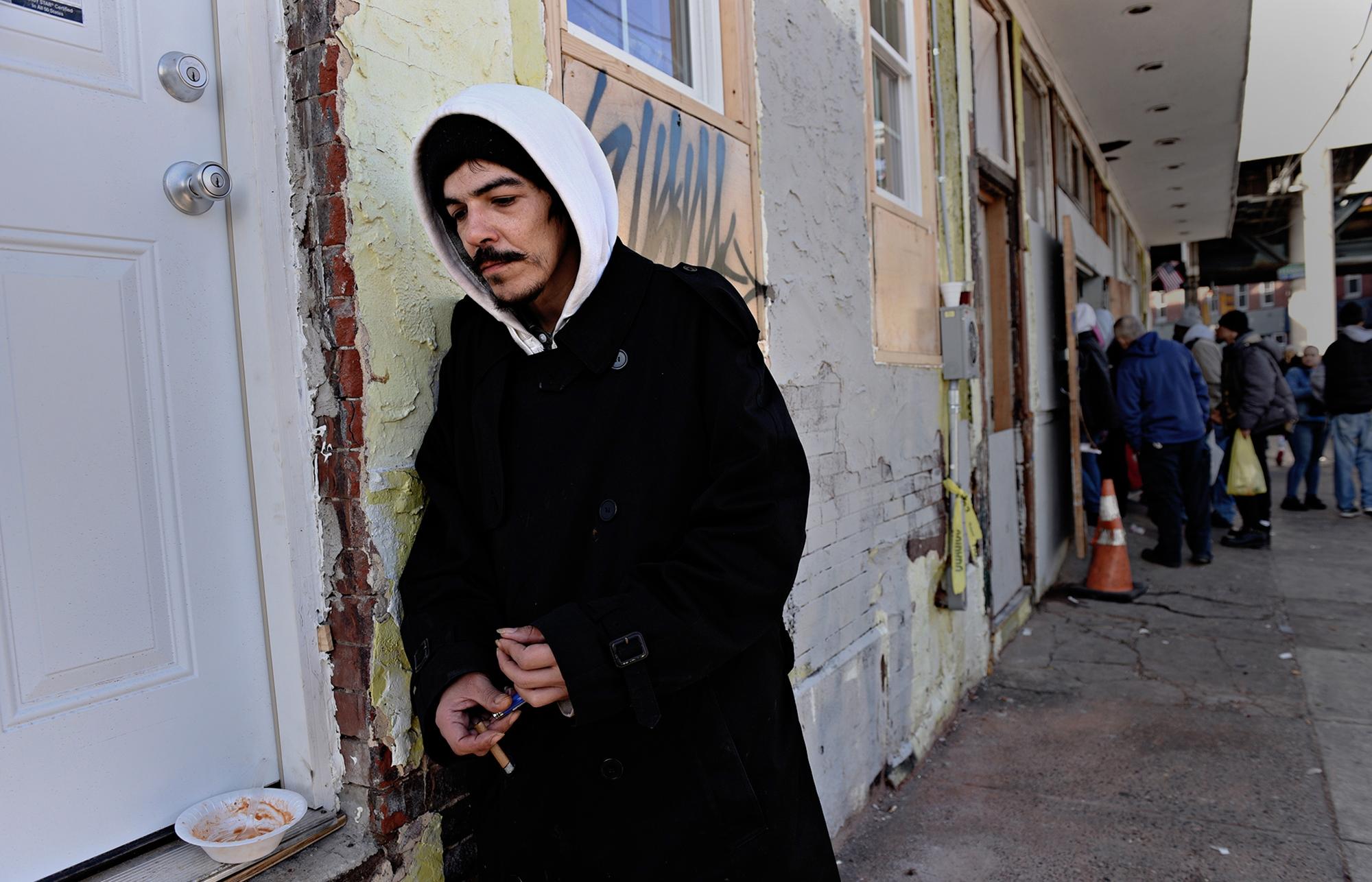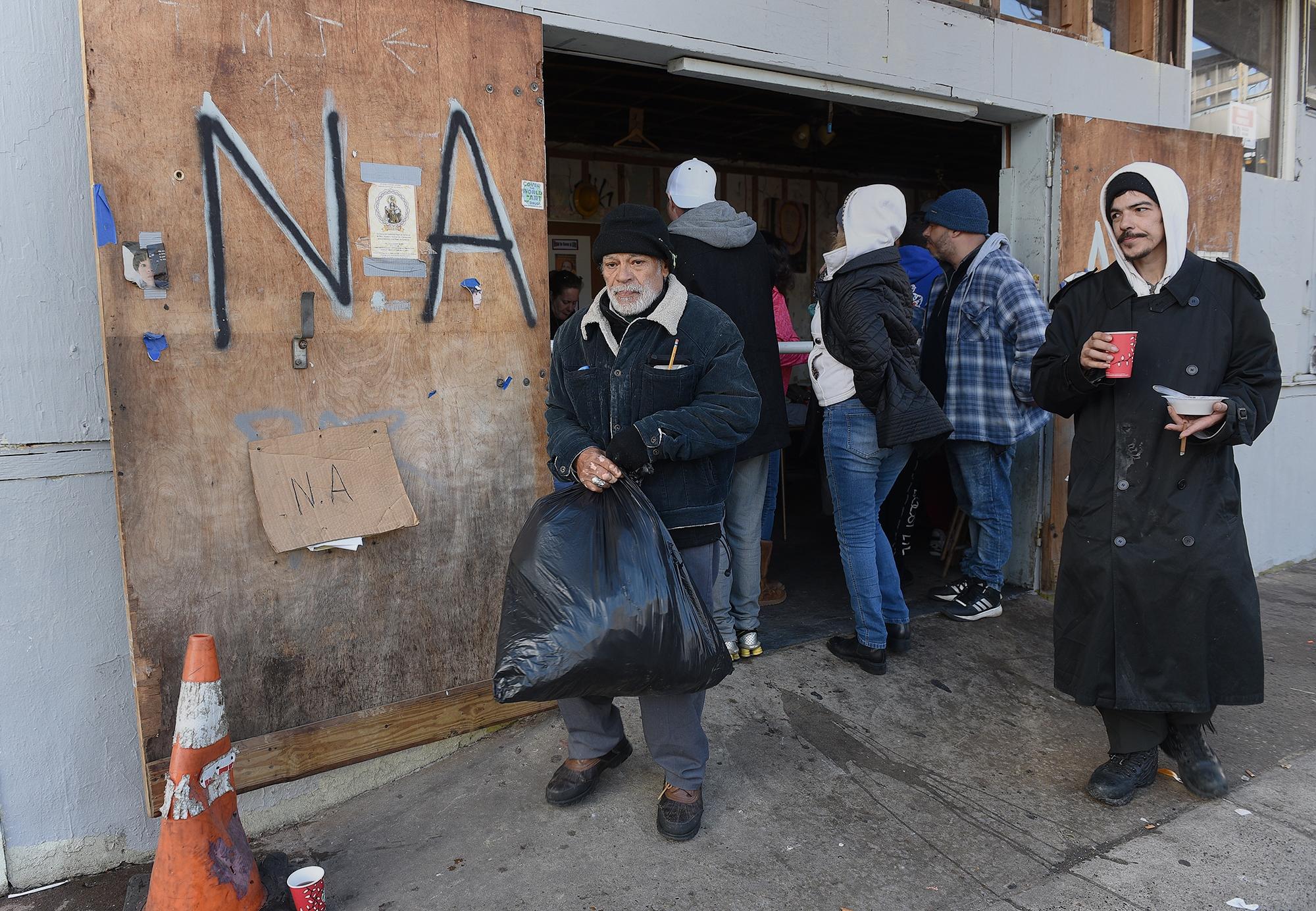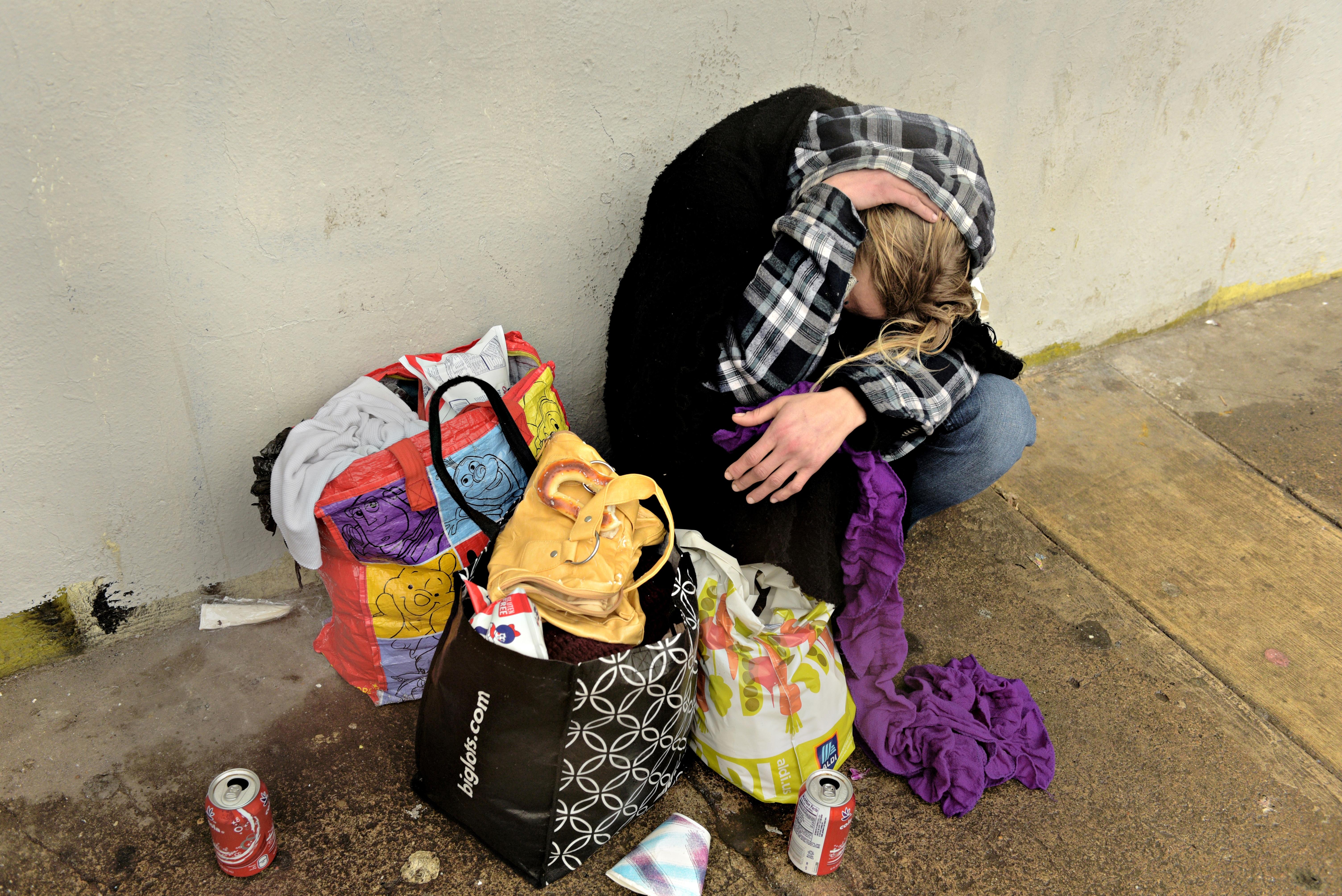
Why help isn't only a 'yes' away
Luke Scrbacic feels like he’s caught in a perfect storm that keeps him using heroin.
At the center of it is fear of what he would suffer if he stopped.
“I’m so afraid of being sick,” he said, standing along one of the needle-strewn streets of Philadelphia's Kensington section, his home for the past two years. The withdrawal triggers an agonizing pain unlike anything he’s ever experienced.
“The only way I feel safe is to have it in me.”
Yet a few feet away from him, volunteers at The Last Stop, a neighborhood refuge, handed out steamy dishes of meat and potatoes and offered people help to get into treatment. But the tall, thin Lansdale native couldn’t reach out — not without confidence that he would have some form of drug to counter the pain of withdrawal.
The social pressures and other forces swirling around Luke and those like him are strong as well.
Luke scanned the despondent scenery that makes up the heart of the heroin epidemic.
Around him were people bundled in layers of clothes, some pushing everything they own in a cart, also chasing the same high.
He knows these are not the kind of “friends” he needs around him.
“They help me to be a better drug user. And that’s not what I want to be. I need to be around people ... that are positive,” the part-time caregiver said. “I’d like to get a better job so that I could relocate to a different part of the city so it wouldn’t be so in my face every day."
That’s where Luke is. And that’s exactly where Carla Sofronski will try to reach him.
“Meet people where they’re at” is a phrase frequently used by those who practice harm reduction. It means working with people with substance use disorder, even if they are unable or unwilling to stop, to reduce the risks and the negative consequences. Medication-assisted treatment, needle exchanges and safe injection sites are some of the well-known examples.
Sofronski uses harm reduction strategies in her work as an advocate with Mental Health Partnerships in the Delaware Valley, and while doing outreach in encampments like Kensington.
Some of the people there feel stuck, unable to get around or over the many barriers that block their path out. Sofronski, who has been in recovery herself for almost 10 years, tries to identify what their wants and needs are, and help them start taking steps from there.
"If we really want to make a difference we have to start meeting people where they are. We have to start removing these barriers," she said.
Many people are told their first step has to be inpatient treatment or rehab, said Dr. Chad Coren, a psychologist who specializes in addiction and has offices in Doylestown and Washington Crossing, Bucks County.
“They're frightened that the minute they open up and tell someone what's going on with them that they're going to be mandated and told what they're going to do,” Coren said.
Instead, Coren asks his patients want they want to do.
“When there’s someone who’s willing to figure out a way to take a step forward on their terms, that’s often when great work gets done,” he said.
When people reach out to Gail O'Brien, founder of the Evesham-based Adam O'Brien Foundation named after her son, she helps connect them to whatever type of facility they need — detox, inpatient, outpatient, even sober living houses.
But even with an advocate’s help, it can take a long time to get into some facilities, especially for people who need a higher level of care, Sofronski said. She had a client who once waited six weeks for a bed.
"To have somebody keep the desire for six weeks while they're living in the woods — to have somebody keep the desire for six weeks while they're living at home in a nice cushy life — is difficult,” she said. “It's life or death for many people.”

People need same-day services, according to Sofronski. "We need to start treating it as an emergency situation."
Being “dope sick” is a powerful deterrent to detoxing on their own.
For people who haven’t been through it, it's hard to imagine, Coren said.
“I want you to imagine the thirstiest that you've ever been in your entire life. So thirsty and parched that your cells are screaming for water. So thirsty that no thought exists except finding water,” he said. “Now the question becomes how well are you able to function under those conditions? ... You have tasks that need to be finished, you have bills that need to be paid. But now you're dying of thirst with only one biological goal that needs to be accomplished: to quench that thirst. Imagine that and now amplify that by 10 and you have heroin addiction."
Back in Kensington, Frank, who asked for his last name not to be used, stood a few feet from Luke. Holding a soda and snacking on a pretzel, Frank tried to explain the anxiety surrounding the thought of stopping his drug use.
The Last Stop doesn’t provide medicine that could ease the pain through the process, so he won’t bother going in, he said.
So, even with a way out just a few feet within reach, he shrugs it off.
“I don’t see much hope for a lot of us.”
Trisha Baum, founder of the nonprofit Hand n’ Heart, sees that desperation and rejection at least twice a month while doing outreach in the Browns Mills section of Pemberton Township, Burlington County, and in Kensington.
The Mount Laurel resident and more than 20 volunteers hand out “blessing bags” with snacks, socks and other essential items, which give them a chance to build connections and trust, before they offer help. She leaves her card in all the bags as well, so if people don’t want help right away, they can call when they’re ready.
"Ready" can take a long time — some people believe they have to hit rock bottom first.
“I want to do everything in my power to prevent that from happening,” Coren said, adding he believes people can still succeed if they get help sooner. “Because why must a person lose everything? Think about what this might look like if we were talking about a cardiovascular-related concern. Do we want a person to experience a heart attack or an aneurysm before we start helping to address their concerns? No.”
Joe Mitsch almost lost everything — including custody of his then 6-year-old daughter.
“I had nothing,” the Evesham resident said. “I lost my daughter. I lost my family.”
One of the first barriers Mitsch had to overcome was understanding why he used. He turned to substances to cope, especially after the death of his mother.
He's come to understand why he began to use heroin and found purpose in his life. Mitsch has been in recovery for over five years, working in treatment centers and volunteering with the Adam O’Brien Foundation.
But there were times his pride, ego and fear stood in his way.
“My whole thing was I wanted to maintain this fictitious facade that I was OK,” he said. “I didn’t want people to see me at my lowest point."
Other people don't want to be seen as a failure.
"You announce to the world that you're going into treatment and [then there's] the expectation that now this person needs to maintain sobriety,” Sofronski explained. “One would hope that somebody would maintain sobriety but the truth is things happen and relapse happens.
“Then we're dealing with the stigma and shame of coming back and saying, 'Sorry guys, I had a slip.’ Or, when you call yourself out of work and your employer says, 'I wonder what's really going on,' " she said.
But some also might be afraid of succeeding. Life after drugs might mean dealing with problems that were there before, and new ones like depression, damaged relationships and physical changes, Sofronski said.
"There's many things that when you take the drink or the drug away, that somebody has to face.”
